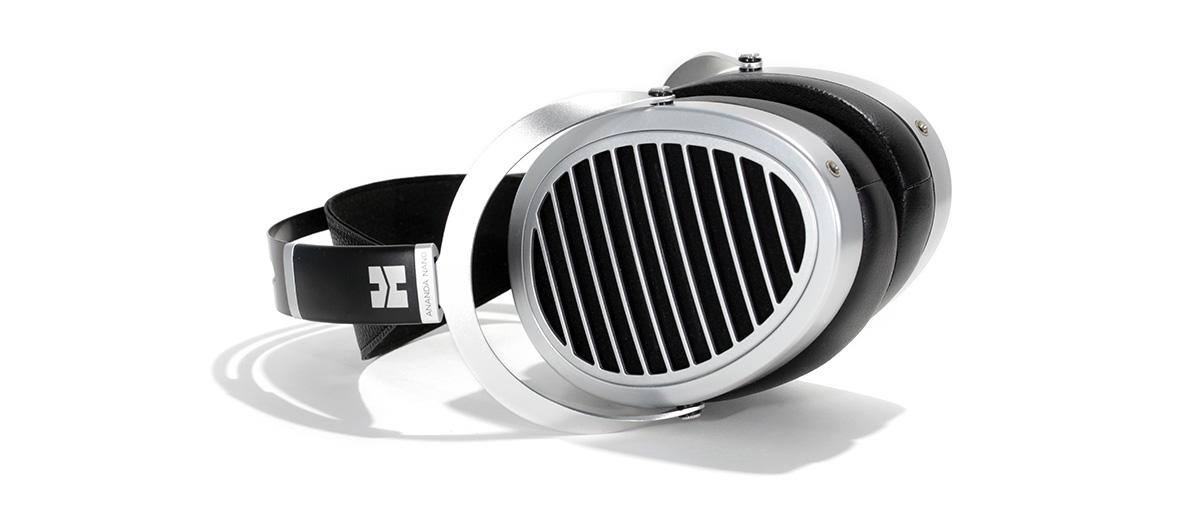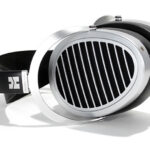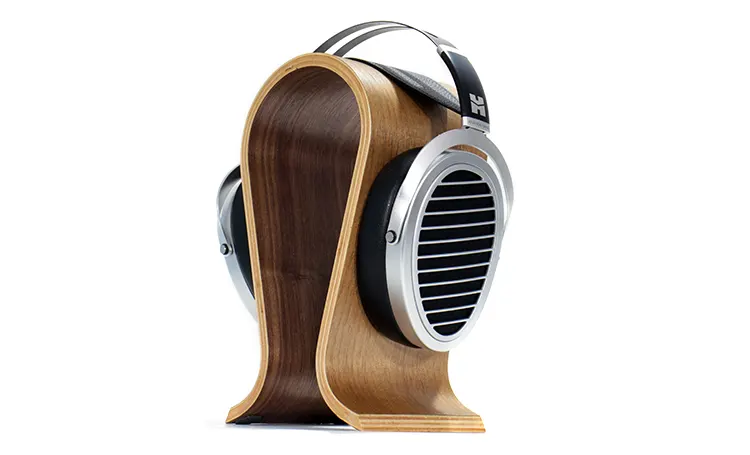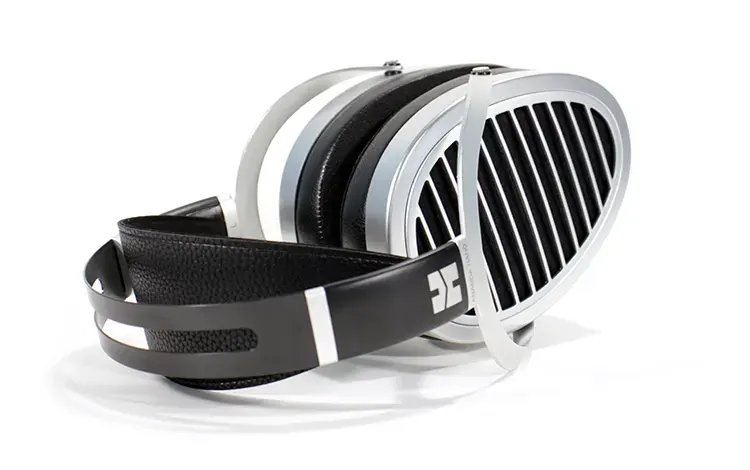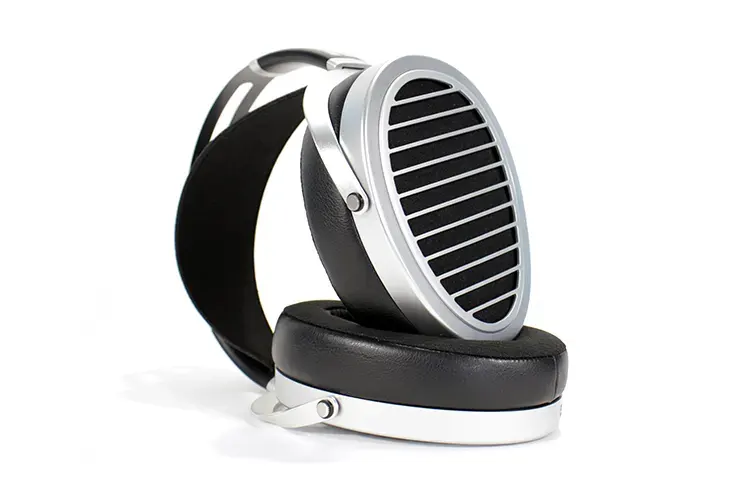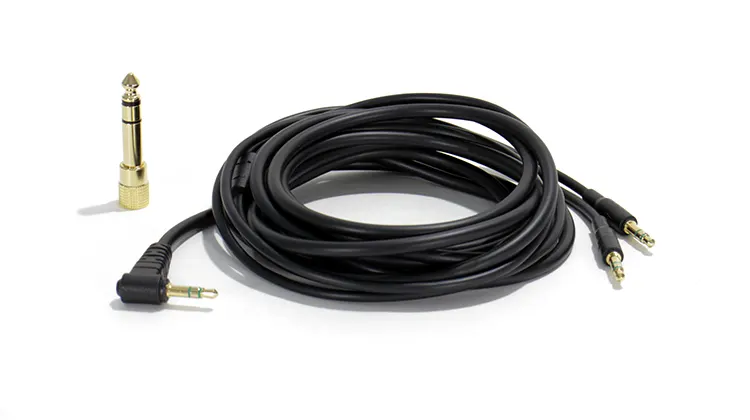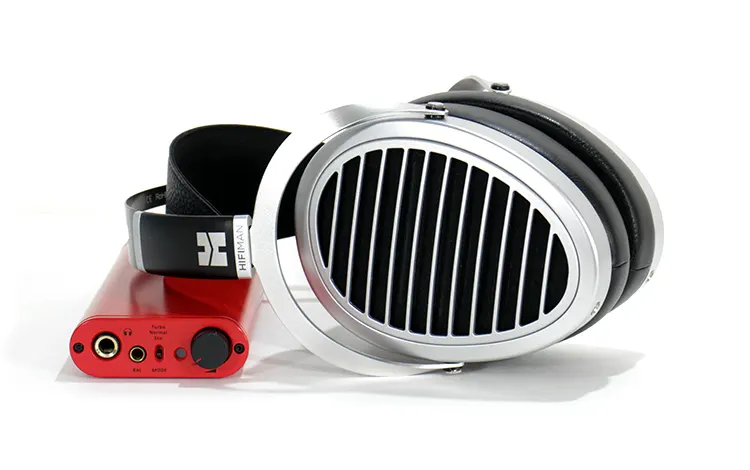Today, we review the HIFIMAN Ananda Nano, which is a new open-back planar magnetic headphone using ‘Nanometer Thickness Diaphragm’ technology. It is priced at $599.
Disclaimer: This sample was sent to us in exchange for our honest opinion. Headfonics is an independent website with no affiliate links or status. We thank the team at HIFIMAN for their support.
To read more about the HIFIMAN products we have previously covered on Headfonics click here.
Note, that this post follows our current scoring guidelines which you can read in more detail here.
Today, we cover another recent HIFIMAN launch, the Ananda Nano open-back planar magnetic headphones.
The original Ananda has gone through some revisions just like the HE1000, the Arya, and some others within the HIFIMAN lineup.
Some of the morphs we’ve seen the Ananda take were the inclusion of a Bluetooth model and it also received the Stealth Magnet treatment later on.
The Ananda Nano incorporates the Nanometer Thickness Diaphragm along with stealth magnet technology and HIFIMAN has brought both of these designs together down to a more affordable level with this latest iteration.
Tech Highlights
The HIFIMAN Ananda Nano is an open-back planar magnetic headphone and the successor to the original Ananda from 2018. It is rated at 14Ω impedance with an SPL of 94 dB/mW @ 1kHz.
Gone is the older thicker NsD diaphragm used in the likes of the original Ananda, the Sundara Closed Back, and the recently released Audivina. Now, we have the thinner and lighter ‘Nanometer Thickness Diaphragm’.
We previously saw the Nanometer Thickness Diaphragm in the likes of the recently released Arya Organic, going as far back as the HE1000 in 2016. From what we are told it is the company’s thinnest diaphragm to date.
If you want to see a quick demonstration of what HIFIMAN means when they speak of the ‘nano’ level thickness in any material go check out a video posted by HIFIMAN that’s called “HIFIMAN HE1000 planar headphone nanometer diaphragm”. Fang Bian elegantly demonstrates in this video how light these diaphragms are.
The concept here is that the lighter the diaphragm is, the faster the planar diaphragm will respond to input, therefore improving on such things as transient response, and tonal accuracy. It allows the driver to react faster to stimuli to increase efficiency amongst other things.
Add to that stealth magnet technology and HIFIMAN’s Asymmetrical large cup window shade design, and you start to get a sense of what the new Ananda Nano brings to the table.
Design
Cup
HIFIMAN decided to dress up the Ananda Nano in a silver theme on the cups and the decorative patented window shade design. There are some black accents that you get off the pads, the driver’s protective cloth, and the headband but the general theme is silver and black.
The window shade system helps those drivers breathe freely. You can see a low airflow restriction cloth filter between the window shade system and the driver and there’s another one on the inside that makes up part of the ear pad system.
The driver size is not disclosed but it seems to be the same 160 mm in length as the other Asymmetric drivers in the HIFIMAN lineup. The driver itself also seems to use a dual-sided magnet array as well.
I do like the direction HIFIMAN has taken with the 3.5mm connectivity. It seems the connectors have improved over past HIFIMAN offerings. These hang on to the 3.5mm plug like a champ and maintain a solid connection.
The original 3.5mm pin arrangement has also been kept, with tip positive and negative sleeves. So custom cables are welcome.
Headband
I call this hybrid headband the Sundara headband since it was first introduced on that headphone. But the yokes were extended on this model. It’s mostly a metal build except for the adjustment section which uses metal bands at the ends to add rigidity and strength to the polymer pieces.
This new style headband leaves me pondering about one thing. What’s going to happen when it gets sweaty and nasty? I would highly suggest getting a head strap cover and wrapping the leatherette part. Get one, by any means. You’ll thank me later for it.
Other than that, It’s well-designed but I still prefer their other headbands, especially the first design which sits on top of your head in a low-profile manner. This style does produce a protrusion above the head strap. But it’s a comfortable package altogether, nonetheless.
Comfort & Isolation
The comfort level of the Ananda Nano is on the high side of the scale. But once again, we must go back to the design itself and look at how many heads can this design accommodate comfortably.
My set has a rather short head strap and because of that, headband expansion is limited. I measured just over six inches of expansion between the two inner parts of the pads.
In other words, if you are endowed with a large head or even a medium-sized head like me, you might find you might have to be a bit forceful to slip them on your head. The clamping force itself is rather high but the pads make up for it as far as comfort.
When it comes to isolation, there isn’t any. There’s no blockage of outside noise. I can hear a rather silent fan near me running with them on. But there’s also lots of sound leakage. These will disturb those nearby. So, although these are portable-friendly, keep that in mind.
Stock Pads
I love the way those giant Asymmetric cups hug my face since they never allow any part of the pad to touch my earlobes. I’ve always been a fan of the HIFIMAN’s Asymmetric pads. I just wished they were more durable.
Nothing has changed here. The Ananda Nano pads are a hybrid type with perforated vinyl on the inside, solid vinyl on the outside, and a hex-pattern cloth on the side that makes contact with your cheeks. They seem to be stuffed with a fast-reacting foam that’s firm with a small amount of give.
They’re easy to replace and readily available, which is always a plus. The mounting method hasn’t changed either. It remains the six-point clip-on ring system. So as long as you keep the head strap clean, freshening these up should be an easy task.
Stock Cable
HIFIMAN seems to encourage the use of aftermarket custom cables because their stock cables are always below what their headphones merit.
The Ananda Nano is a mid-tier headphone but it comes with a common cable assembly. The stock cable was improved over the surgical tube-covered variants of the past I must admit. This cable’s insulation is made of flexible rubber, which, again, is more flexible and has less noise pickup.
The assembly terminates all around in 3.5mm plugs. The cable length is 10 feet so HIFIMAN is guessing that most listeners will be using the Ananda Nano at home, in a desktop scenario, or near a home entertainment center I suppose.
Packaging & Accessories
Inside the brown corrugated and laminated cardboard box you’ll find the Ananda Nano inside HIFIMAN’s newly designed storage case along with the 10-foot cable and a 6.35mm adapter, and that’s about it.
No literature is included. However, HIFIMAN did post a downloadable version of the owner’s manual on their HIFIMAN.com website in PDF format.
Packaging is simple and to the point. It’s a steer away from the old days when HIFIMAN used to ship their headphones inside a velvet-lined box. If the cost of packaging can be reduced and the savings passed on to the customer I’m all for it.
Sound Impressions
To test the HIFIMAN Ananda Nano’s capabilities HIFIMAN’s own dual Himalaya Pro equipped EF600 and the EF400 were used and an iFi Audio iDSD Diablo for a Burr-Brow perspective. HIFIMAN’s own Supermini was also used to obtain a portable scenario perspective which is powered by Opamps.
The stock cable was always used to get a general feel of the overall package. Known FLAC files were used exclusively and playback was done on a PC using Windows 11 and Foobar. All settings were flat. USB 3.2 ports were used to feed the DAC sections.
Summary
The first thing you’ll notice about the HIFIMAN Ananda Nano is the speediness of the audio delivery. Its electrostatic-esque delivery of sound seems front and center. The Ananda Nano supplies a high-grade level of tonal balance along with a speedy transient response.
The drivers are fast acting and promote a true toned character. The overall sound doesn’t present itself in a monotone manner since there’s an uncharacteristic bass production, or an increase, and lots of treble presence, while simultaneously presenting a midrange that’s well-controlled.
That speed translated into an overall sense of forwardness in detail but it could be the common characteristic of the addition of stealth magnets that tend to present music in a more focused way.
I still would consider it a bright presentation but one with an added bass presence that brings this headphone into better balance. This tune veers from the old Ananda’s bright-centric tuning and adds a needed dose of bass presence.
Bass
I like the direction HIFIMAN is taking with their planar driver tuning and the fact that they’re introducing a line with better bass response and definition. The Ananda Nano fits that missing piece in place by producing a bass curve I prefer over the original Ananda.
The bass does dip but only below 25 Hz. It does remain present at 20 Hz and even at 18 Hz, just not as pronounced as the rest of the bass spectrum past the above-mentioned frequency. Above that, there’s a small elevation at 60 Hz, and it flattens out when it passes the 120 Hz mark.
These drivers produce slam and rattle when they have to but they also present bass notes in a balanced manner with most of the other frequencies.
It’s a textured bass that has lots of body but it’s not fat-bodied until you boost the bass around 3 to 4 decibels below the 70 Hz mark then it becomes perfect to my ears. It seems the stock tuning is more in line with an analytical characteristic so that you can listen distinctly to each note.
Midrange
The Ananda Nano midrange response is smooth and lifelike in tone. It’s rich in texture and well-behaved. But it lost some of its size and centered itself over the first Ananda.
One notes an ample amount of detail within the midrange bands but it does have a slight dip in the lower ranges. The midrange is most prominent with vocal presentation and these headphones seem to focus their effort on producing realism. Particularly in vocal presentation.
There’s a rise somewhere around the 1.5 kHz area and it gives a slight lift to the midrange detail and nuances but it does veer from flat. Instruments come true to life but take a back seat to the vocals.
These are also good at reproducing wind instruments with an ample amount of realism but are better at vocal presentation.
Treble
The Ananda Nano treble response is well-defined, a tad forward, and there’s plenty of crystallinity. But the treble tends to get hot at times. For example, I can hear a bit of a sizzle effect, particularly on extended cymbal crashes but not so much on short taps.
I would say this is the one area where the tuning is not perfect. There seems to be lots of energy at the 7 kHz point that needs taming. I obtained a cleaner sonic character overall from the high frequencies by lowering the 7 kHz band by 3 decibels.
The peak also reflects on the vocal presentation. The rest of the treble is produced with a clear character that never becomes harsh, even at high volume levels. As a matter of fact, these like to be played at loud levels.
Staging & Dynamics
HIFIMAN has steered their headphones and the Ananda Nano away from the ultra-wide panoramic soundstage and has opted for one that’s a bit introverted and personal. But they also managed to maintain good separation and distinct placement.
You get a good sense of height and width but what they do best is depth which is strange because it’s one of the areas that is harder to recreate. Add to that some decent micro-placement and it all adds up to make the Ananda Nano an interesting listen.
The Ananda Nano displays a punchy character and hits hard and fast. That’s their forte or niche, speed. That’s their main selling point. Attack and decay are fast and the overall presentation is propellant and energizing.
Click on page 2 below for our recommended pairings and selected comparisons.

